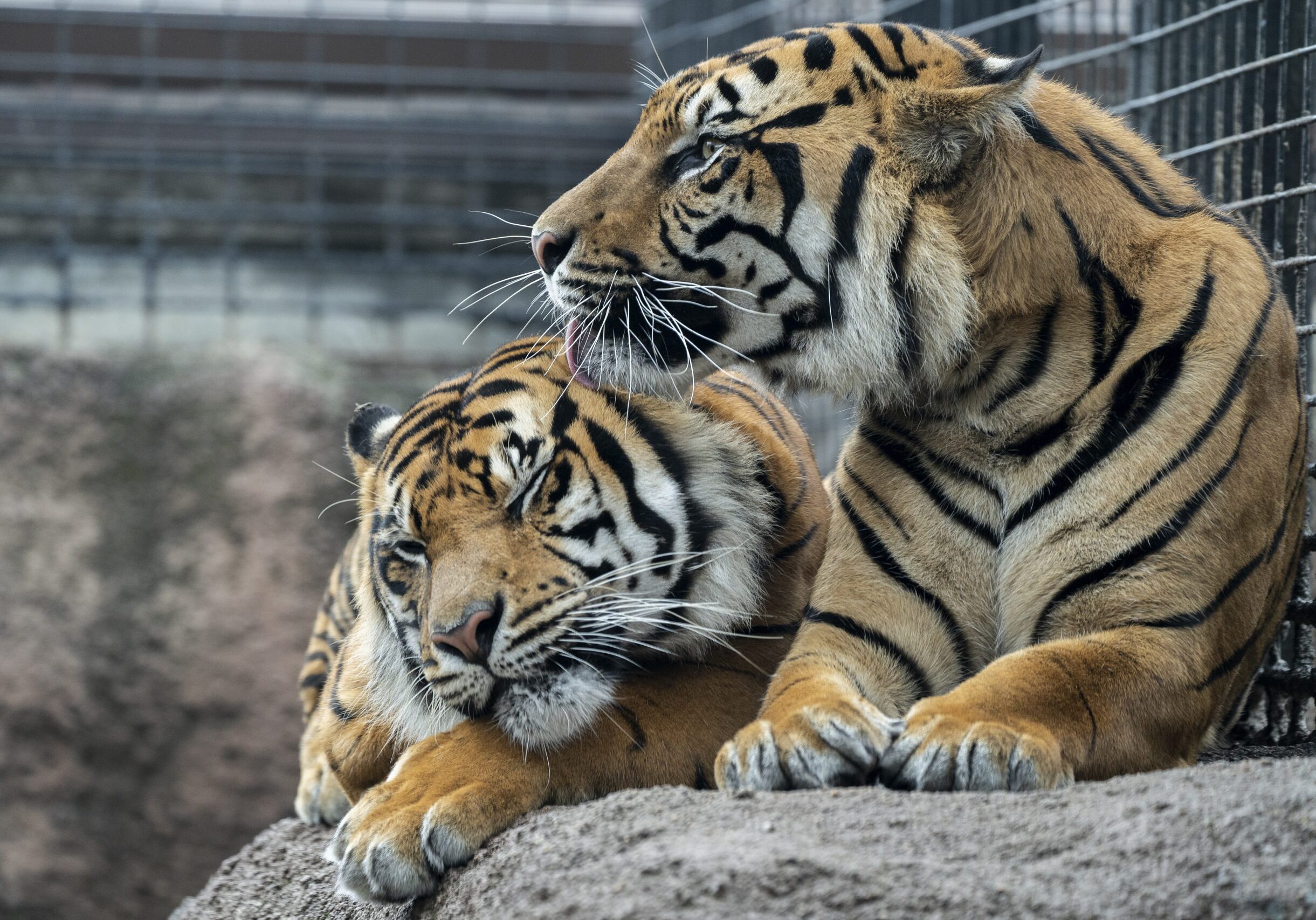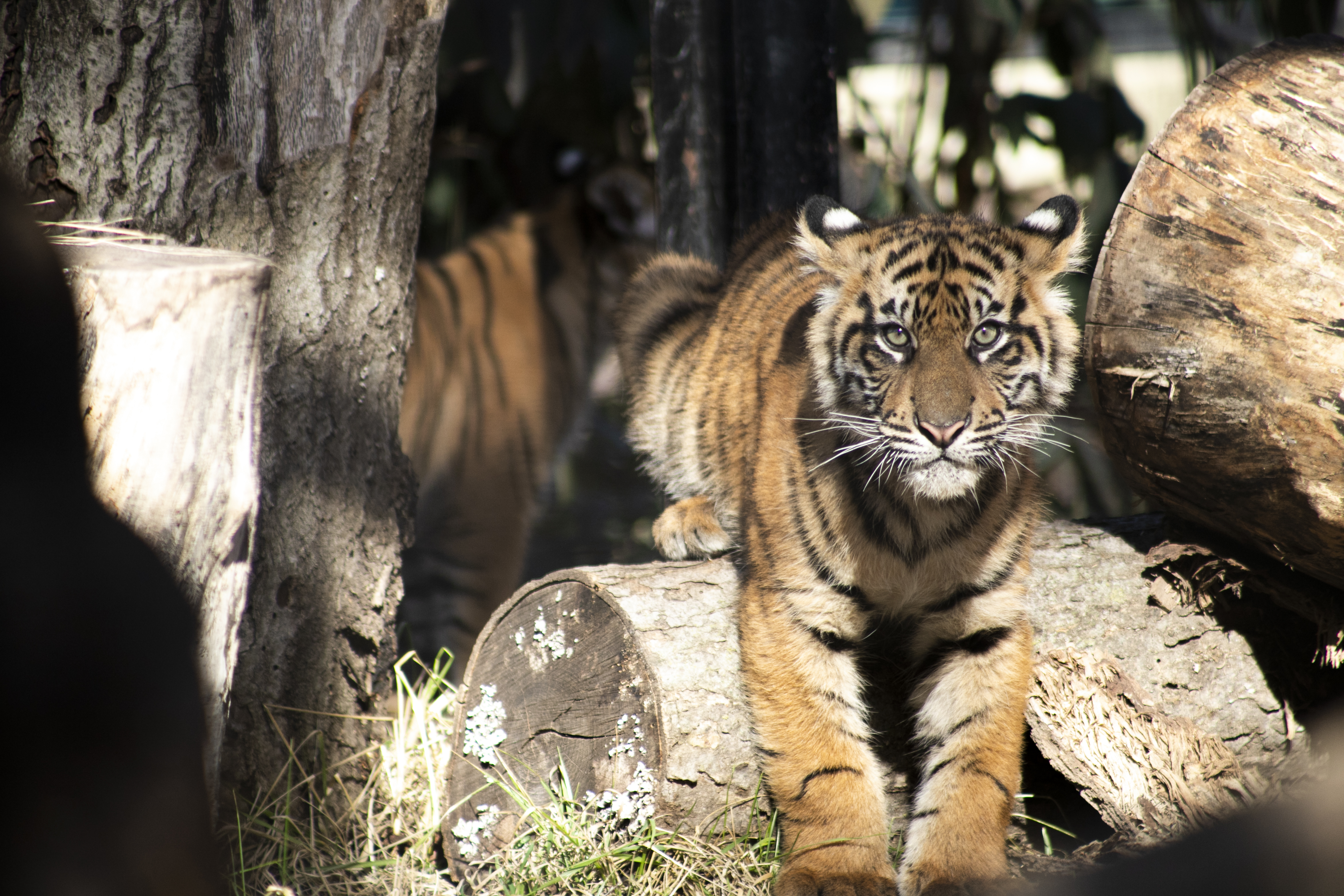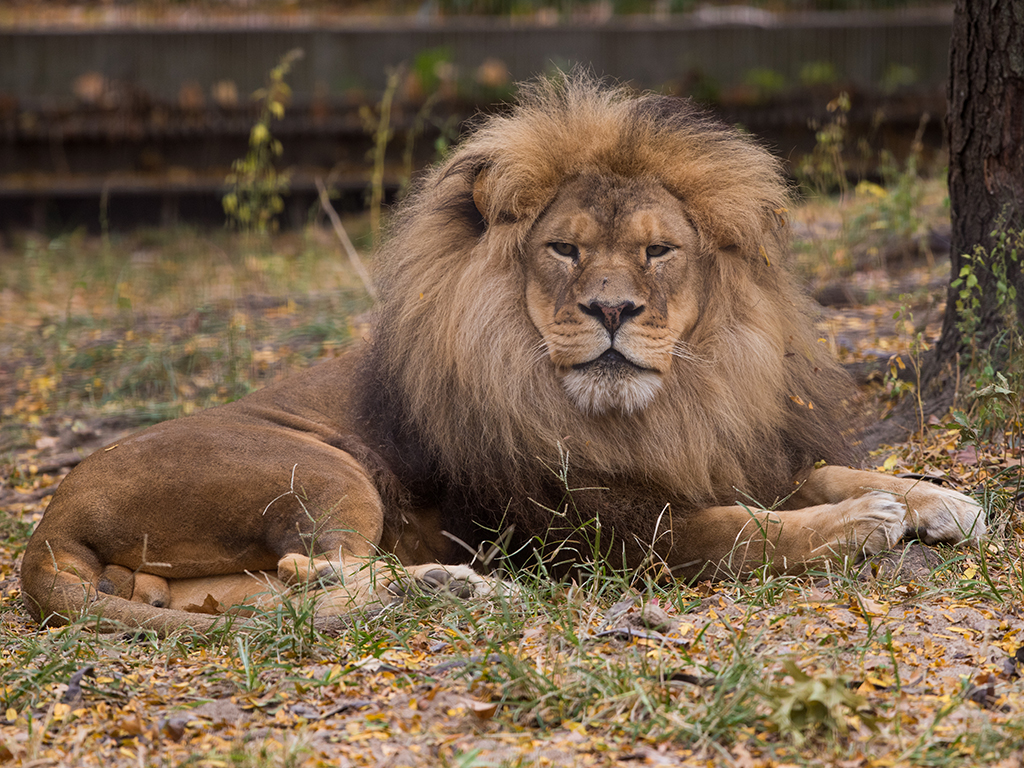
Sumatran Tigers: Conservation Challenges and Hope for the Future
Tigers once roamed across much of Asia. Today, however, only five subspecies remain, with fewer than 4,000 tigers left in the wild, occupying less than 7% of their original range. The challenges facing these magnificent creatures include poaching, habitat loss, human-wildlife conflict, and the loss of prey. While tiger conservation has seen some successes, offering hope for their future, the Sumatran tiger, found here at the Topeka Zoo, remains critically endangered with fewer than 400 individuals left in the wild.
Our Conservation Commitment:
At the Topeka Zoo, we believe a world without tigers is simply unimaginable. We are committed to ensuring a future for these iconic creatures, and our comprehensive tiger conservation plan includes the following efforts:
Fieldwork in Sumatra
The zoo sponsors 100% of the cost to deploy a Wildlife Ranger in Sumatra, protecting tigers and the forests they rely on for survival.
Community Partnership
Through a unique partnership with Blind Tiger Brewery and Restaurant, we raise funds to support our tiger conservation efforts and spread awareness about this critical cause.
Breeding Program
We operate a breeding program that has successfully produced multiple tiger births here at the zoo, helping to ensure the survival of these incredible animals.
Education and Awareness
We provide extensive education to engage the public on the challenges wild tigers face and the concrete actions we can all take to protect them.

Tiger Conservation Campaign
The Tiger Conservation Campaign, coordinated by the Tiger Species Survival Plan (SSP), is dedicated to supporting wild tiger conservation efforts and raising public awareness about the challenges these majestic animals face. The campaign focuses on studying wild tigers and their habitats, preventing poaching, fostering peaceful coexistence between local communities and tigers, providing medical treatment to injured or ill tigers, and advocating for protective legislation. By engaging zoos and the public, the campaign aims to secure a future for wild tigers through collaborative conservation initiatives.

SAFE Program
African Lion
The AZA's SAFE (Saving Animals From Extinction) African Lion program aims to increase wild lion populations by reinforcing connected landscapes and supporting tolerant communities coexisting with lions. The initiative unites AZA-accredited institutions with local organizations in Africa to address the decline in lion numbers. Key strategies include public engagement, field conservation partnerships like Zoo Boise's work with Gorongosa Restoration Park, and efforts to raise awareness about the threats lions face, ensuring a sustainable future for the species.
Join the Fight to Save Endangered Species
Together, we can make a difference. By supporting Topeka Zoo’s SAFE initiatives, you’re helping protect vulnerable species, restore habitats, and ensure a future where wildlife can thrive. Join us in taking action today!
